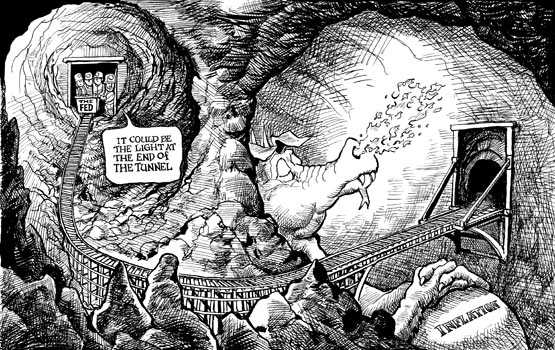Do Legislators Want To Solve Tough Problems?
Ezra Klein on ending the filibuster (emphasis added):
The likelier outcome, I think, is that Congress will dismantle the filibuster when it realizes that the filibuster is making it less relevant. If you look back at the financial crisis, the lead response came from the Federal Reserve, because everyone understood that Congress couldn’t move quickly enough. If you look at global warming, there’s considerable pessimism that the Senate will be able to pass cap-and-trade, and many expect the Environmental Protection Agency to simply embark on its own campaign to regulate carbon emissions. If you look at health care, ideas like the Federal Health Board or the Independent Medicare Advisory Committee are an explicit effort to entrust the continual process of health-care reform to a more agile body than the Congress.
On issue after issue, the gridlock encouraged by the filibuster is not simply promoting inaction, but extra-congressional action. After all, the fact that Congress cannot solve problems does not mean the the problems don’t need to be solved. And there are other avenues for action. The judicial system. The executive branch. The Federal Reserve. Ad hoc agencies meant to make the decisions Congress cannot. An angry Congress could block these changes. But the majority doesn’t want to block these changes. They want action on these problems, even if they can’t be the actors. So they permit these second-best outcomes that address the issues, but do so by shrinking Congress’s authority.
That’s not a very good situation, of course. It’s less accountable, for one thing. And it’s less efficient. Congress has all sorts of powers that the executive branch and outside agencies don’t have. This makes for solutions of a very complicated and strange type. Regulating carbon through the EPA is much worse than pricing it through cap-and-trade. But imperfect solutions are better than no solutions. Eventually, however, I imagine Congress will want to get back into the solutions game, and won’t like the fact that its authority has been systematically curtailed. And that will require restoring its capacity to act.
This, I think, flies in the face of public choice theory in general. Ezra Klein is assuming that Congress wants to solve problems. To some extent, of course, I will agree with him that many in Congress want problems to be solved. But those same folks in Congress want to be re-elected. They know that making hard decisions that might solve problems (but piss off voters) doesn’t help them get re-elected. This is why they’re so scared to vote for tax increases to balance the budget.
Congress LOVES foisting their responsibility onto federal bureaucracies. That way they get what they want (supposedly “good” policies being enacted) while they can spend time engaging in politically-rewarding tasks like passing out earmarks, addressing steroids in baseball, and trying to “fix” the BCS.
Ezra has a bit of projection bias here. He’s a [self-proclaimed] policy wonk. I understand his position. On the days when I’m not an anarchist, I’m somewhat of a policy wonk myself. We like looking at the nitty-gritty of exactly how a policy might work, how it might affect behaviors outside of its mandate, and whether it will be an optimal way to improve outcomes (although we’ll often differ on our conclusions). His projection bias is that most Congressmen are also policy wonks*. And that’s just not true. If it were, they might read the bills they vote on!
Ezra believes that at some point Congress will be unhappy with their inability to rein in the action of the bureaucracies they created and empowered. I disagree. They have the ability to let these bureaucracies enact unpopular policies — ones the politicians believe to be necessary — while giving them plausible deniability about their own role in the matter. Sure, sometimes there’s a show trial to be had, as you see now with the Audit the Fed movement. But I don’t think that’s about actually hampering the fed** as much as it is about kowtowing to public anger at the government for letting the economy tank while they’re tossing money around to banking fat-cats.
Congress is happy to let the bureaucracies handle this. Sure, when the excrement hits the air circulation device, they’ll yank a few department heads and cabinet members in front of a panel to publicly beat them up. But once the dust settles, Congress lets the bureaucracies go back to work while they dine with lobbyists discussing whether $100M in tax breaks and subsidies from the next appropriations bill are enough to get that next big campaign contribution check to be signed.
Congress has no incentive to solve problems. They have incentive to look like they’re trying to solve problems.
» Read more

